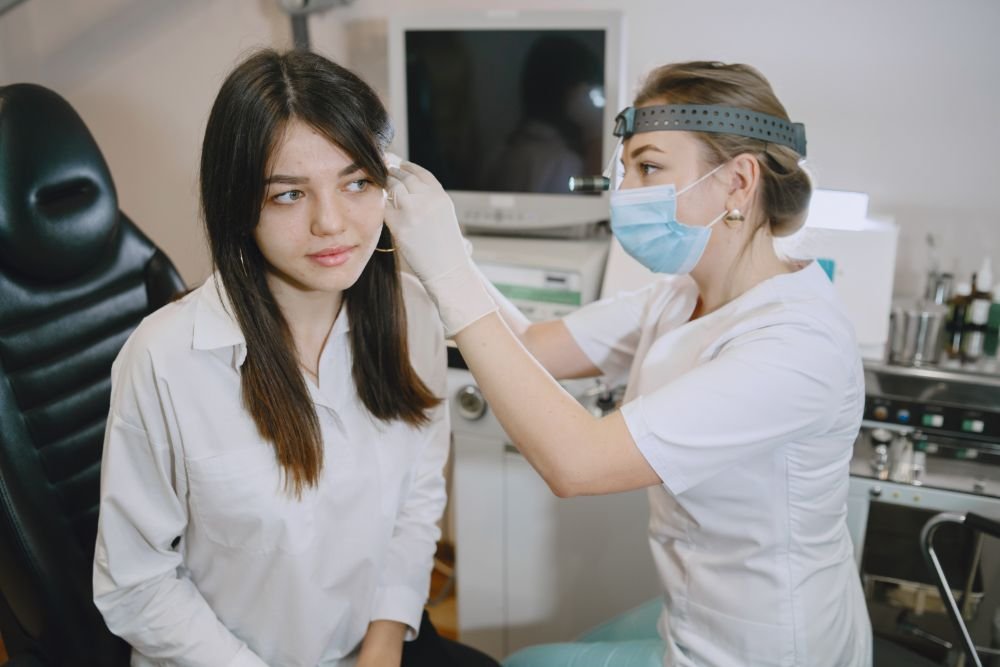Swimmer’s ear is a common issue that many swimmers and non-swimmers alike might face, especially during the warmer months.
Scientifically known as otitis externa, it is an infection of the outer ear canal. This article delves into the symptoms, prevention methods, and treatment options for swimmer’s ear, ensuring you have a comprehensive understanding of how to handle this condition.
Table of Contents
Understanding Swimmer’s Ear Symptoms
One of the first signs of swimmer’s ear is usually pain. This discomfort can range from a mild annoyance to severe pain that disrupts daily activities.
Notably, this pain often worsens when you touch or move your ear. The severity of the pain can sometimes make it difficult to sleep or concentrate, making it crucial to address the symptoms promptly.
Itchiness: A Precursor to Pain
Before the pain sets in, many individuals experience itchiness in the ear canal. This can be an early warning sign that an infection is developing. While the itchiness itself might not be overly bothersome, it often precedes more severe symptoms and should not be ignored.
Drainage: Fluids and Pus
Another common symptom of swimmer’s ear is drainage from the ear. This can include pus or other fluids that are expelled from the infected ear canal.
The presence of drainage indicates that the body is trying to fight off an infection, and it often accompanies other symptoms like pain and swelling.
Hearing Loss: Temporary but Troubling
Swelling in the ear canal can lead to temporary hearing loss. This symptom occurs because the swollen tissues block sound waves from reaching the eardrum effectively.
While this hearing loss is usually temporary, it can cause significant distress and disorientation, particularly if it persists.
Feeling of Fullness: A Plugged Up Sensation
Many people with swimmer’s ear describe a sensation of fullness in the affected ear. This can feel like the ear is plugged up or has water trapped inside it.
This sensation can be quite uncomfortable and often accompanies the other symptoms of swimmer’s ear.
Redness and Swelling: Visible Signs of Infection
The outer part of the ear may become red and swollen as the infection progresses. This visible sign can help differentiate swimmer’s ear from other types of ear infections, which might not cause such noticeable external changes.
Discover Natural Remedies: Medicinal Plants That Combat Swimmer’s Ear – Click Here!
Preventing Swimmer’s Ear

One of the most effective ways to prevent swimmer’s ear is to keep your ears dry. After swimming or bathing, make sure to gently dry your outer ear with a clean, soft towel.
Tilting your head to the side can help water drain out naturally. Using a hairdryer on the lowest setting, held at least a foot away from the ear, can also help evaporate any remaining moisture.
Avoid Inserting Objects into Your Ears
It’s important to avoid putting anything into your ears, including cotton swabs, bobby pins, or even your fingers. These objects can irritate the ear canal and increase the risk of infection.
Cotton swabs, in particular, can push wax and debris further into the ear, potentially causing blockages and creating an environment where bacteria can thrive.
Use Earplugs When Swimming
If you frequently swim, especially in unclean or natural bodies of water, consider wearing earplugs. These can help keep water out of your ears and reduce the risk of developing swimmer’s ear. Make sure the earplugs fit well and are designed for swimming, as poorly fitting earplugs can cause irritation.
Dry Excess Moisture from Hearing Aids
If you use hearing aids, it’s crucial to dry them thoroughly after use. Moisture can accumulate in and around hearing aids, creating a breeding ground for bacteria. Regularly cleaning and drying your hearing aids can help prevent infections.
Treating Swimmer’s Ear at Home

For managing the discomfort associated with swimmer’s ear, over-the-counter pain relievers like ibuprofen or acetaminophen can be effective.
These medications can help reduce inflammation and alleviate pain, making it easier to manage daily activities while your ear heals.
Natural Ear Care: Medicinal Plants That Protect Against Swimmer’s Ear – Learn More!
Warm Compresses for Pain Relief
Applying a warm compress to the affected ear for 10-20 minutes at a time can help reduce pain and inflammation.
The warmth can soothe the ear canal and promote blood flow, which aids in the healing process. Make sure the compress is warm, not hot, to avoid burning the sensitive skin around the ear.
Important Note: Avoid Self-Medicating
It is essential to consult a doctor for a proper diagnosis and treatment plan. Do not use over-the-counter ear drops unless directed by a healthcare professional.
Using ear drops improperly, especially if you have a ruptured eardrum, can worsen the infection and lead to complications.
When to See a Doctor
If your symptoms are severe, do not improve within a few days of home care, or if you experience fever, it’s important to see a doctor. A healthcare professional can prescribe antibiotic or antifungal ear drops to treat the infection effectively.
Ignoring severe symptoms or delaying treatment can lead to more serious complications, such as chronic ear infections or hearing loss.
Conclusion
Understanding swimmer’s ear symptoms, prevention, and treatment is essential for anyone who spends time in the water or is prone to ear infections.
By recognizing the signs early and taking steps to prevent and treat this condition, you can ensure your ears remain healthy and infection-free.
Remember, maintaining ear hygiene and avoiding unnecessary irritation are key to preventing swimmer’s ear. If you experience any symptoms, consult a healthcare professional to get the appropriate treatment and avoid complications.

